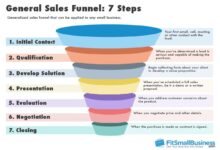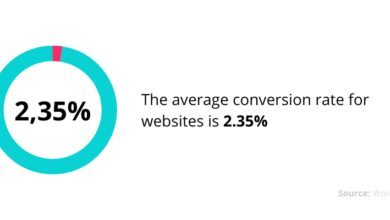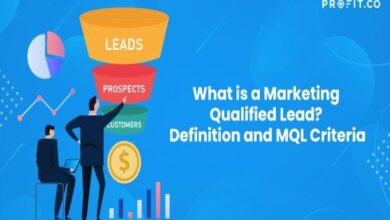Lead Scoring: 7 Powerful Strategies to Skyrocket Sales
Imagine knowing exactly which leads are ready to buy—before they even talk to sales. That’s the power of Lead Scoring. It’s not magic; it’s smart, data-driven strategy.
What Is Lead Scoring and Why It Matters

Lead Scoring is a systematic method used by sales and marketing teams to rank prospects based on their perceived value to the organization. By assigning numerical scores to leads, businesses can prioritize outreach efforts, improve conversion rates, and align sales and marketing goals more effectively.
Definition and Core Concept
At its heart, Lead Scoring evaluates both explicit and implicit data to determine a lead’s readiness to buy. Explicit data includes demographic information like job title, company size, or industry. Implicit data covers behavioral patterns such as website visits, email engagement, or content downloads.
- Demographic fit: Does the lead match your ideal customer profile?
- Behavioral engagement: How actively are they interacting with your brand?
- Scoring thresholds: When does a lead become sales-ready?
According to HubSpot, companies using Lead Scoring experience up to a 77% increase in lead generation ROI.
Historical Evolution of Lead Scoring
Lead Scoring isn’t new. It originated in the early 2000s when CRM systems began integrating with marketing automation tools. Initially, scoring was manual and subjective—sales reps would flag hot leads based on gut feeling.
Today, thanks to AI and machine learning, Lead Scoring has evolved into dynamic, predictive models that adapt in real time. Platforms like Salesforce and Marketo now offer automated scoring engines that analyze thousands of data points.
“Lead Scoring transforms guesswork into precision. It’s the bridge between marketing effort and sales results.” — MarketingProfs
Types of Lead Scoring Models
Not all Lead Scoring models are created equal. The right model depends on your business size, industry, and data maturity. Let’s explore the most common types.
Demographic-Based Lead Scoring
This model focuses on who the lead is. It assigns points based on firmographic and personal attributes such as:
- Job title (e.g., CTO = +20 points)
- Industry (e.g., SaaS = +15 points)
- Company revenue (e.g., $10M+ = +25 points)
- Geographic location (e.g., North America = +10 points)
While simple to implement, this model lacks behavioral insight. A CEO from a target industry might score high but show zero engagement—making them a false positive.
Behavioral-Based Lead Scoring
This model tracks what leads do. Every interaction with your brand adds or subtracts points. Examples include:
- Visiting pricing page: +15 points
- Downloading a whitepaper: +10 points
- Attending a webinar: +20 points
- Unsubscribing from emails: -20 points
Behavioral scoring is highly effective because it reflects intent. However, it requires robust tracking systems and integration between your website, CRM, and marketing tools.
Predictive Lead Scoring
Predictive Lead Scoring uses machine learning algorithms to analyze historical data and identify patterns that correlate with conversion. Tools like InsideSales and Lift AI process vast datasets to predict which leads are most likely to convert.
These models consider hundreds of variables, including:
- Engagement velocity (how quickly a lead moves through the funnel)
- Content affinity (which topics they engage with)
- Social media activity
- Technographic data (tools they use)
Predictive scoring reduces human bias and scales effortlessly, but it requires clean, abundant data and technical expertise to implement.
Benefits of Implementing Lead Scoring
When done right, Lead Scoring delivers measurable impact across the revenue engine. Let’s break down the key advantages.
Improved Sales Efficiency
Sales teams waste an average of 33% of their time on unqualified leads (source: CSO Insights). Lead Scoring eliminates this inefficiency by surfacing only the hottest prospects.
With a clear scoring threshold (e.g., 80+ points), reps know exactly when to pick up the phone. This leads to faster follow-ups, higher close rates, and better resource allocation.
Stronger Marketing and Sales Alignment
One of the biggest challenges in B2B organizations is the disconnect between marketing and sales. Marketing generates leads; sales often rejects them as “not qualified.”
Lead Scoring creates a shared language. Both teams agree on what constitutes a “Marketing Qualified Lead” (MQL) and a “Sales Qualified Lead” (SQL). This alignment reduces friction and improves collaboration.
“Lead Scoring isn’t just a tactic—it’s a cultural shift toward data-driven decision-making.” — Forrester Research
Higher Conversion Rates and Revenue Growth
By focusing on high-intent leads, companies see significant improvements in conversion metrics. According to MarketingProfs, organizations with mature Lead Scoring processes achieve 20-30% higher conversion rates from MQL to SQL.
Additionally, Gartner reports that companies using advanced Lead Scoring models grow revenue 10% faster than peers who don’t.
How to Build a Lead Scoring Model Step by Step
Creating an effective Lead Scoring system isn’t a one-size-fits-all process. It requires planning, collaboration, and iteration. Follow these steps to build a model that works.
Step 1: Define Your Ideal Customer Profile (ICP)
Before scoring leads, you need to know who your ideal customer is. Start by analyzing your existing customer base. Look for common traits among your most profitable accounts.
- Industry: Are most customers in healthcare or fintech?
- Company size: Do they have 50-200 employees?
- Job titles: Is the decision-maker usually a Director or VP?
- Technologies used: Do they already use Salesforce or Slack?
Use this data to create a detailed ICP. This becomes the foundation of your demographic scoring criteria.
Step 2: Identify Key Buying Signals
Next, map out the behaviors that indicate purchase intent. Work with your sales team to identify patterns they’ve observed in closed-won deals.
Common buying signals include:
- Multiple visits to the pricing page
- Requesting a demo
- Engaging with sales emails
- Comparing competitors (e.g., visiting “vs” pages)
Assign point values to each behavior based on its predictive power. For example, requesting a demo might be worth 50 points, while opening an email is only worth 5.
Step 3: Set Scoring Thresholds and Handoff Rules
Define clear thresholds for lead progression. For example:
- 0–49 points: Cold lead (nurture with content)
- 50–79 points: Warm lead (targeted email campaigns)
- 80+ points: Hot lead (immediate sales follow-up)
Also, establish handoff rules between marketing and sales. Use your CRM to automate notifications when a lead hits the SQL threshold.
Common Lead Scoring Mistakes to Avoid
Even well-intentioned teams make mistakes when implementing Lead Scoring. Here are the most common pitfalls and how to avoid them.
Over-Reliance on Demographics
While job title and company size matter, they don’t tell the whole story. A junior developer might be the technical evaluator, while a mid-level manager has budget authority.
Solution: Balance demographic scoring with behavioral data. A lead with a perfect profile but no engagement should not outrank an active mid-level user.
Neglecting Negative Scoring
Most teams focus on adding points but forget to subtract them. A lead who unsubscribes, visits the cancellation page, or stops engaging should lose points.
Negative scoring prevents wasted effort on disinterested prospects. For example:
- Unsubscribing from emails: -25 points
- Visiting ‘careers’ page: -15 points (might be a job seeker)
- No engagement in 30 days: -10 points
Failing to Update the Model Regularly
Markets change. Buyer behavior evolves. A scoring model that worked last year may be obsolete today.
Best practice: Review and recalibrate your model quarterly. Analyze which scored leads converted and which didn’t. Adjust point values accordingly.
“A static Lead Scoring model is a decaying model.” — Salesforce Research
Integrating Lead Scoring with CRM and Marketing Automation
Lead Scoring doesn’t exist in a vacuum. It must be integrated with your CRM and marketing stack to deliver real value.
CRM Integration for Real-Time Scoring
Your CRM (e.g., Salesforce, HubSpot, Zoho) should serve as the central hub for lead data. Ensure that scoring rules are embedded directly into lead records.
Benefits of CRM integration:
- Real-time score updates
- Automated lead routing to the right sales rep
- Visibility into score changes over time
- Reporting on scoring effectiveness
Use workflows or triggers to notify sales when a lead crosses the qualification threshold.
Marketing Automation for Behavioral Tracking
Tools like Marketo, Pardot, or HubSpot Marketing Hub track user behavior across your digital properties. They feed this data into your scoring model.
Key integration points:
- Website tracking via cookies and UTM parameters
- Email engagement (opens, clicks, forwards)
- Form submissions and content downloads
- Social media interactions
Ensure your marketing automation platform passes behavioral data to your CRM in real time for accurate scoring.
Measuring the Success of Your Lead Scoring Strategy
Like any business initiative, Lead Scoring must be measured and optimized. Here’s how to track its impact.
Key Performance Indicators (KPIs)
Monitor these metrics to evaluate your Lead Scoring effectiveness:
- MQL to SQL conversion rate: Are more marketing leads becoming sales-ready?
- Sales cycle length: Is it shortening due to better lead prioritization?
- Win rate: Are high-scoring leads closing at a higher rate?
- Lead-to-customer conversion rate: Overall funnel efficiency
- Sales team satisfaction: Are reps happy with lead quality?
Set benchmarks and track progress monthly.
A/B Testing Your Scoring Model
Don’t assume your initial model is perfect. Run A/B tests to compare different scoring rules.
For example:
- Group A: Leads scored with traditional demographic + behavioral model
- Group B: Leads scored with predictive AI model
Measure which group generates more SQLs and closes faster. Use insights to refine your approach.
Feedback Loops Between Sales and Marketing
The most powerful optimization tool is direct feedback. Implement a system where sales reps can “reject” leads and explain why.
Common feedback reasons:
- Wrong decision-maker
- No budget
- Not in market
- Already using a competitor
Use this data to adjust scoring criteria and improve future lead quality.
Future Trends in Lead Scoring
Lead Scoring is evolving rapidly. Emerging technologies are making it smarter, faster, and more predictive.
AI and Machine Learning Dominance
In the next 3–5 years, AI-driven Lead Scoring will become the standard. Platforms will use natural language processing (NLP) to analyze email sentiment, chatbot conversations, and even call transcripts.
For example, if a lead says “We’re evaluating solutions” in a chat, the system could automatically boost their score.
Account-Based Scoring (ABM Integration)
Traditional Lead Scoring focuses on individuals. The future is account-based. Instead of scoring one lead, you score the entire account based on engagement from multiple stakeholders.
This approach aligns perfectly with Account-Based Marketing (ABM) strategies. Tools like 6sense and Demandbase already offer account-level intent scoring.
Real-Time Intent Data from Third Parties
Companies are now buying intent data from third-party providers like Bombora or G2. This data reveals when prospects are actively researching topics related to your product—even on external websites.
Integrating this into your Lead Scoring model gives you a competitive edge. You can reach out before competitors even know the lead exists.
What is Lead Scoring?
Lead Scoring is a methodology that assigns numerical values to leads based on their demographic profile and behavioral engagement, helping businesses prioritize which prospects are most likely to convert into customers.
How do you calculate a lead score?
A lead score is calculated by combining demographic points (e.g., job title, company size) and behavioral points (e.g., website visits, email opens). Each attribute is assigned a weight based on its correlation with past conversions.
What’s the difference between MQL and SQL?
A Marketing Qualified Lead (MQL) has shown interest but isn’t ready to buy. A Sales Qualified Lead (SQL) has met specific scoring thresholds and is deemed ready for direct sales engagement.
Can small businesses use Lead Scoring?
Absolutely. Even small teams can implement basic Lead Scoring using tools like HubSpot or Zoho CRM. Start simple—track page visits and form fills—then scale as you grow.
How often should you update your Lead Scoring model?
Review and update your model at least quarterly. Analyze conversion data, gather sales feedback, and adjust point values to reflect changing buyer behavior.
Lead Scoring is no longer a luxury—it’s a necessity for modern revenue teams. From improving sales efficiency to boosting conversion rates, the benefits are clear. By combining demographic insights with behavioral data and leveraging automation, businesses can focus their efforts where they matter most. As AI and account-based models rise, the future of Lead Scoring is smarter and more predictive than ever. Start building your model today, and turn your lead pipeline into a precision engine for growth.
Further Reading:









